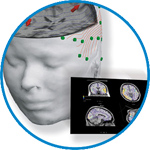- Home
- About ANT
-
Products

asa
asa is a highly flexible EEG/ERP and MEG analysis package with a variety of source reconstruction, signal analysis and MRI processing features.
.jpg)
eego mylab
The new frontier in multimodal brain research. With up to 16 kHz sampling rate, 256 EEG channels and unique software features, eego mylab gives you an unprecedented in-depth understanding of the human brain.

eego sports
eego sports offers complete freedom to collect high-density EEG data, bipolar EMG signals, and a variety of physiological sensor data, wherever and whenever required, with publish quality data in less than 15 minutes!

waveguard net
The waveguard net sets a new standard for research applications requiring high-density EEG data acquisition with quick preparation time, high flexibility, and subject comfort.

visor2
Our new and upgraded visor2 solutions integrate all the latest technologies for navigated rTMS, dual-coil navigation support, EEG-TMS recordings and pre-surgical evaluation for the highest quality in research and clinical procedures.

powerMAG ANT
The PowerMAG ANT 100 rTMS stimulator is designed for the specific needs of high-end TMS applications. Powerful high-frequency TMS as well as high precise single pulse and repetitive pulse protocols are combined in one single device.

xensor
xensor offers the solution for digitization of 3D electrode positions. xensor takes care of the whole procedure; it records, visualizes and stores positions acquired with a dedicated digitizer.

waveguard original
waveguard original is the cap solution for EEG measurements compatible with fMRI, MEG and TMS system. Use of active shielding guarantees performance in even the most demanding environments.

waveguard connect
waveguard connect EEG caps are a perfect match for hospitals and institutes aiming at reliable EEG, maximum uptime and great patient comfort! For optimal signal quality, the electrodes are made of pure, solid tin.

waveguard touch
waveguard touch is a dry electrode EEG cap. The unique Ag/AgCl coated soft polymer electrodes provide stable, research-grade EEG signals while maintaining subject comfort. The combination of these innovative dry electrodes and the industry-leading waveguard cap makes waveguard touch the best solution for dry EEG.

smartmove
smartmove allows planning of a complete TMS session ahead by defining stimulation sites based on anatomical MRI information and functional information like fMRI, PET or EEG/MEG.
Stay - References
- Support
- Events
- News
- Contact Us
You are here
What it means to be Zen: Marked modulations of local and interareal synchronization during open monitoring meditation
What it means to be Zen: Marked modulations of local and interareal synchronization during open monitoring meditation
Experienced meditators are able to voluntarily modulate their state of consciousness and attention. In the present study, we took advantage of this ability and studied brain activity related to the shift of mental state. Electrophysiological activity, i.e. EEG, was recorded from 11 subjects with varying degrees of meditation experience during Zen meditation (a form of open monitoring meditation) and during non-meditation rest. On a behavioral level, mindfulness scores were assessed using the Mindfulness Attention and Awareness Scale (MAAS). Analysis of EEG source power revealed the so far unreported finding that MAAS scores significantly correlated with gamma power (30–250 Hz), particularly high-frequency gamma (100–245 Hz), during meditation. High levels of mindfulness were related to increased high-frequency gamma, for example, in the cingulate cortex and somatosensory cortices. Further, we analyzed the relationship between connectivity during meditation and self-reported mindfulness (MAAS). We found a correlation between graph measures in the 160–170 Hz range and MAAS scores. Higher levels of mindfulness were related to lower small worldedness as well as global and local clustering in paracentral, insular, and thalamic regions during meditation. In sum, the present study shows significant relationships of mindfulness and brain activity during meditation indicated by measures of oscillatory power and graph theoretical measures. The most prominent effects occur in brain structures crucially involved in processes of awareness and attention, which also show structural changes in short- and long-term meditators, suggesting continuative alterations in the meditating brain. Overall, our study reveals strong changes in ongoing oscillatory activity as well as connectivity patterns that appear to be sensitive to the psychological state changes induced by Zen meditation.
For more information, click here >>

 Read more
Read more.jpg)




